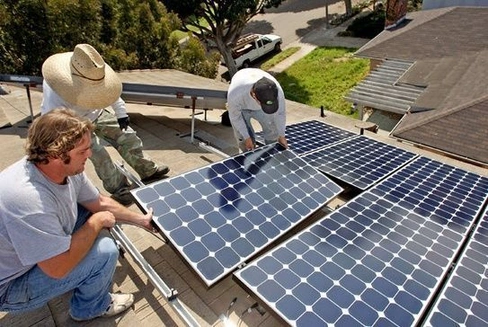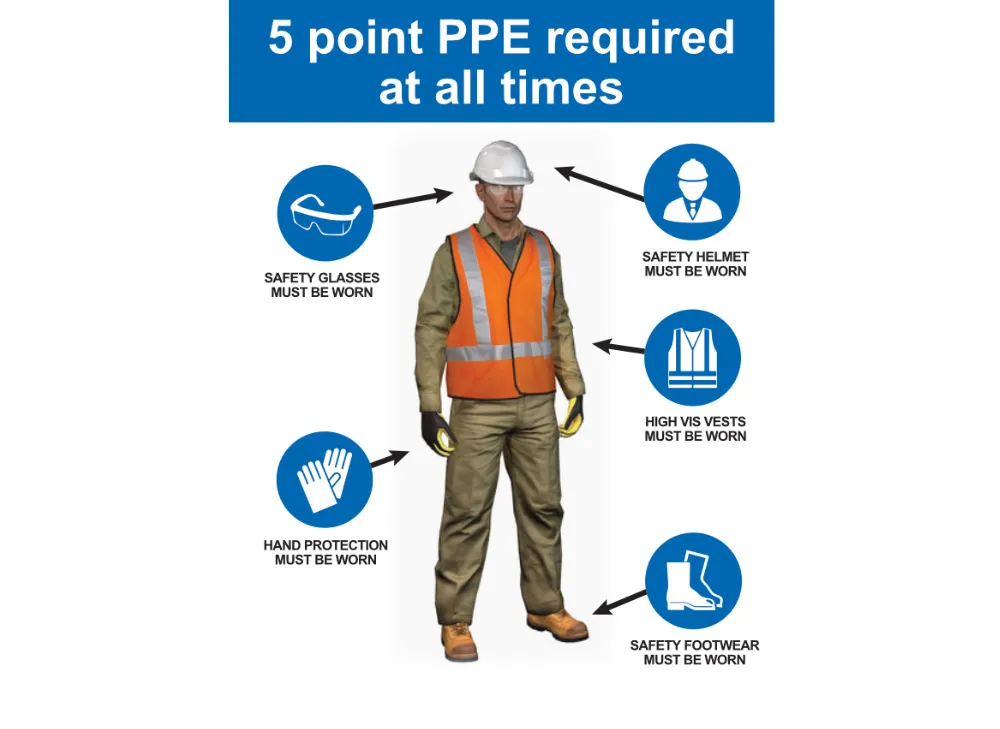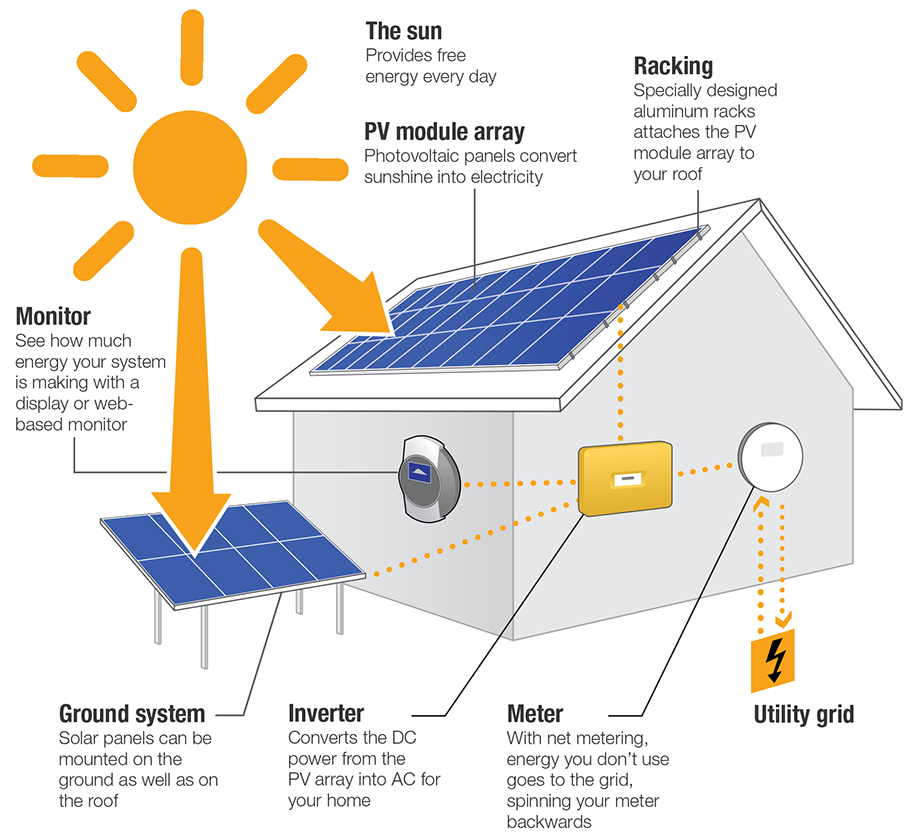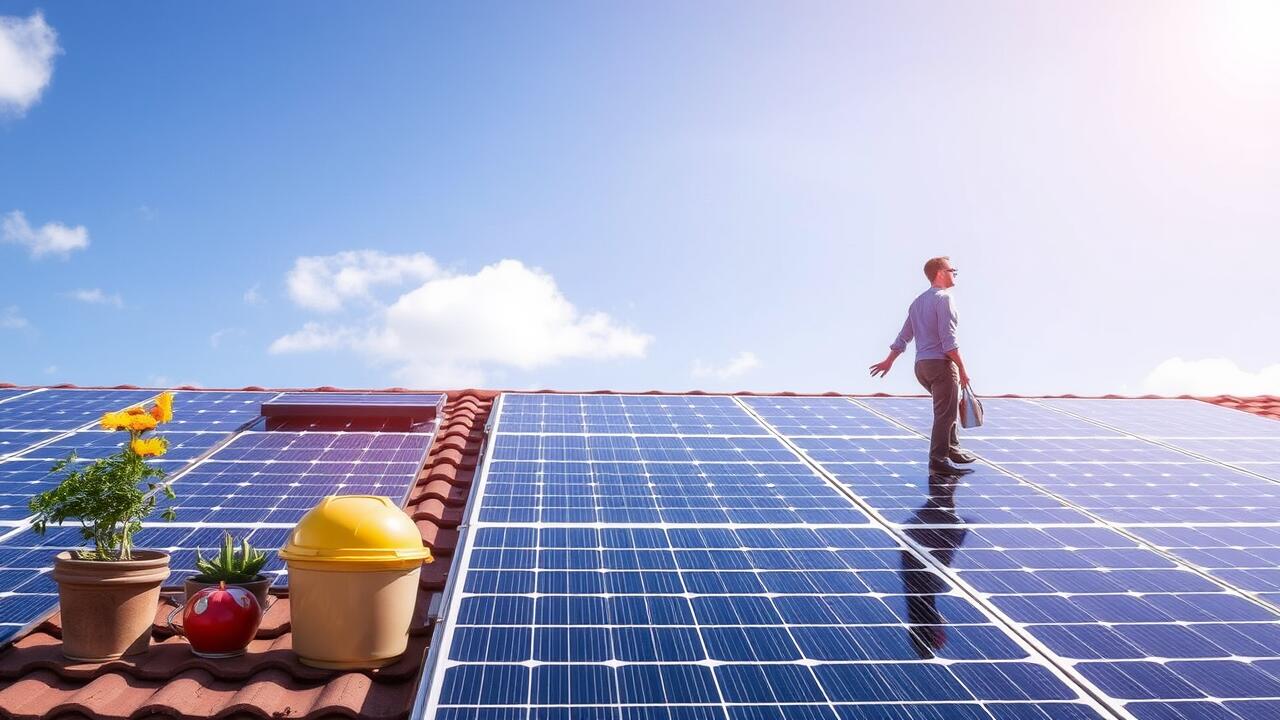Importance of Personal Protective Equipment (PPE) in Solar Panel Installation
Solar panel installation involves working with various equipment and tools, making personal protective equipment (PPE) essential for the safety of workers. PPE refers to gear specifically designed to protect individuals from potential hazards in their work environment. When it comes to installing solar panels, wearing appropriate PPE is crucial to prevent accidents and injuries.

One of the most important pieces of PPE for solar panel installation is safety glasses. These protect the eyes from flying debris, dust, or any other particles that may be present during the installation process. On the same subject : Regulatory Inverters for Solar Power. As workers handle solar panels and perform tasks such as drilling holes or connecting wires, there is a risk of small fragments entering their eyes. Wearing safety glasses significantly reduces this risk and ensures eye protection throughout the installation.
Another critical component of PPE in solar panel installation is fall protection harnesses. Since much of the work takes place on rooftops or elevated structures, there is always a chance of falling if proper precautions are not taken. Harnesses provide support and prevent workers from falling off roofs while they install or maintain PV systems. By using these harnesses correctly, installers can minimize the risk of serious injuries caused by falls.
In addition to safety glasses and harnesses, hard hats are also necessary in solar panel installations. Hard hats offer head protection against falling objects or accidental bumps when working on rooftops or maneuvering around heavy equipment like inverters. The use of hard hats helps reduce head injuries that could occur due to unforeseen circumstances on-site.
Ensuring Safety During Solar Installation: PPE Requirements and Guidelines
Solar panel installation involves various occupational safety and health risks that can be mitigated through the use of proper personal protective equipment (PPE). The Occupational Safety and Health Administration (OSHA) has established guidelines and requirements to ensure installer safety during solar installation. Read also : Mounting Equipment for OffGrid Solar Systems.

One of the most important aspects of installation safety is electrical safety. Solar PV systems generate electricity, which poses potential hazards for installers. To protect against electrical hazards, it is crucial for installers to wear appropriate PPE such as insulated gloves, goggles, and hard hats. These safety gear items provide essential protection by reducing the risk of electric shock or injury from falling objects.
In addition to electrical hazards, there are other occupational risks associated with installing and maintaining solar panels. Installers often work at heights, making fall protection system a necessity. A lifeline or harness should be used when working on rooftops or elevated structures to prevent falls and ensure occupational safety and health.
Overall, ensuring installer safety requires adherence to comprehensive PPE requirements and guidelines set by OSHA. By using appropriate equipment for solar installations such as goggles, harnesses, hard hats, insulated gloves, installers can significantly reduce the risk of accidents or injuries related to their work in renewable energy industry. It is imperative that all individuals involved in solar panel installation follow these safety precautions diligently while handling power tools or working off-grid locations where additional precautions may be necessary.
Understanding the Occupational Safety and Health Administration (OSHA) Standards for Solar Installers
Understanding the Occupational Safety and Health Administration (OSHA) Standards for Solar Installers is crucial for ensuring the safety of workers in the solar industry. OSHA has established specific guidelines and requirements to protect workers from potential hazards associated with installing solar panels.
One important aspect of OSHA standards is fall arrest systems. Workers who are working at heights must use appropriate fall protection equipment, such as harnesses and lanyards, to prevent falls. These safety devices are designed to distribute forces throughout the body in case of a fall, reducing the risk of serious injuries or fatalities. Additionally, OSHA mandates that any worker within six feet of an unprotected edge must be protected by a fall arrest system.
Another key requirement outlined by OSHA is electrical safety precautions when working around photovoltaic (PV) arrays. Solar technicians must adhere to guidelines set forth by both OSHA and the National Electrical Code (NEC). This includes using lockout/tagout procedures when working on live circuits or near energized components, as well as wearing appropriate personal protective equipment (PPE), such as arc flash gear and insulated gloves. Furthermore, all PV systems should have ground fault circuit interrupter (GFCI) protection to minimize electric shock hazards.
By understanding these OSHA standards for solar installers, companies can ensure that their workers have proper training and access to necessary safety equipment. Implementing these regulations not only protects employees but also promotes a culture of solar energy safety within the industry. It is essential for employers to provide ongoing education regarding PPE requirements and safe work practices in order to maintain compliance with OSHA’s regulations at solar farms or during residential installations.
Essential Safety Gear for Solar Technicians: Harnesses, Safety Glasses, and Hard Hats
Solar technicians who are installing photovoltaic (PV) modules need to ensure that they have the essential safety gear to protect themselves from potential hazards. One crucial piece of equipment is a harness, which should be worn by workers who are working at heights or on rooftops. The harness provides anchorage and prevents falls, ensuring the safety of workers throughout the installation process.
Another important safety gear for solar technicians is safety glasses. These glasses protect the eyes from any flying debris or particles that may be present during installation. Since solar panel installations often take place outdoors, it is essential to wear hi-vis clothing and use protective eyewear to increase visibility and reduce the risk of accidents.
Hard hats are also necessary for solar technicians as they provide head protection against falling objects or potential impacts. They should be worn at all times during installation to keep workers safe from any overhead hazards. Additionally, hard hats can help prevent injuries in case of accidental slips or trips.
By having these essential safety gears such as harnesses, safety glasses, and hard hats in place, solar technicians can work confidently knowing that measures are in place to protect them from various risks associated with their job. It’s crucial for employers to prioritize worker safety by providing adequate personal protective equipment (PPE) and ensuring that it is regularly inspected and maintained in a safe and reliable condition.
Overall, using proper PPE like harnesses, safety glasses, and hard hats not only protects individuals but also ensures compliance with occupational health and safety regulations set by organizations like OSHA in the U.S. With these precautions in place, workers exposed to many potential hazards while installing PV systems can carry out their tasks safely without worrying about accidents such as electrocution due to short circuits or being hit by falling objects.
Electrical Safety Precautions for Working with Solar PV Systems
Solar PV systems are becoming increasingly popular as a source of renewable energy. However, working with these systems can pose electrical safety risks that must be addressed to ensure the well-being of workers. To keep them safe, certain precautions must be provided.
When working on rooftops or in areas exposed to sunlight, it is essential for solar technicians to wear appropriate personal protective equipment (PPE). This includes safety glasses and face shields to protect their eyes from potential hazards such as flying debris or sparks. Additionally, wearing steel-toed boots can prevent injuries caused by sharp edges or heavy objects falling onto the feet.
In addition to PPE, following proper work practices is crucial when handling solar PV systems. Technicians should always treat every wire and connector as if they were energized and take necessary precautions accordingly. They must also remain mindful of potential fire hazards by adhering to local fire codes and regulations. Furthermore, regularly inspecting wire insulation for any signs of wear or damage can help prevent overcurrent situations or ground-fault incidents that may lead to electrical shocks or fires.
Creating a safe work environment involves understanding the importance of electrical safety precautions when working with solar PV systems. By providing necessary PPE and promoting responsible work practices, employers can mitigate potential risks associated with this type of installation work. It is crucial for all individuals involved in solar panel installation projects to prioritize safety at all times without compromise.
What is the importance of personal protective equipment (PPE) in solar panel installation?
Personal protective equipment (PPE) is essential in solar panel installation to ensure the safety of workers. It helps protect them from potential hazards, such as electrical shock, falls, and eye injuries.
What are the PPE requirements and guidelines for ensuring safety during solar installation?
The PPE requirements for solar installation may vary, but generally, they include safety glasses, hard hats, gloves, and appropriate footwear. Additionally, workers should follow guidelines such as avoiding loose clothing, securing tools and equipment, and using fall protection systems when working at heights.
What are the Occupational Safety and Health Administration (OSHA) standards for solar installers?
OSHA has specific standards for solar installers to ensure a safe working environment. These standards cover areas such as fall protection, electrical safety, lockout/tagout procedures, and proper training for workers.
What are the essential safety gear for solar technicians?
Some essential safety gear for solar technicians includes harnesses, safety glasses, and hard hats. Harnesses are important when working at heights, while safety glasses protect the eyes from debris or potential hazards. Hard hats provide head protection in case of falling objects.
What are some electrical safety precautions for working with solar PV systems?
When working with solar PV systems, it is important to follow electrical safety precautions such as shutting off the power supply before performing any work, using insulated tools, and wearing appropriate protective gear. It is also crucial to understand the electrical system and follow proper grounding procedures.



